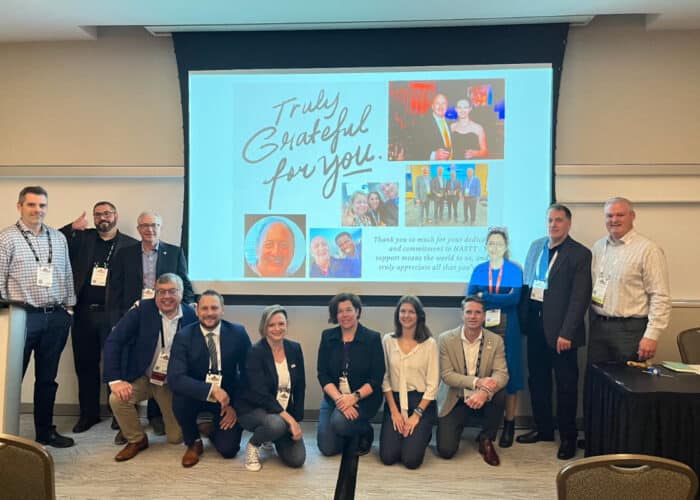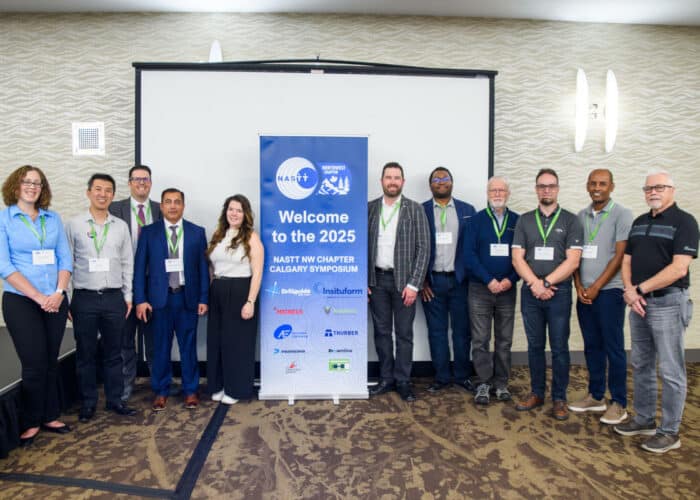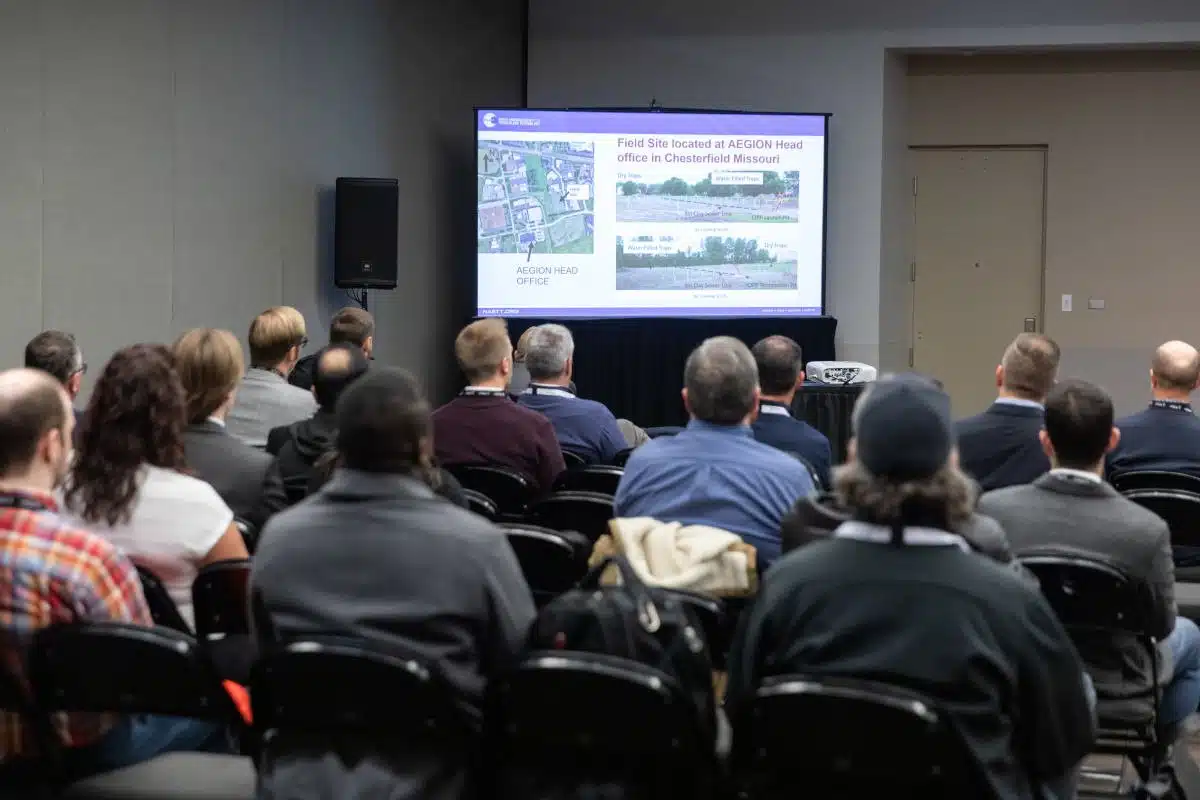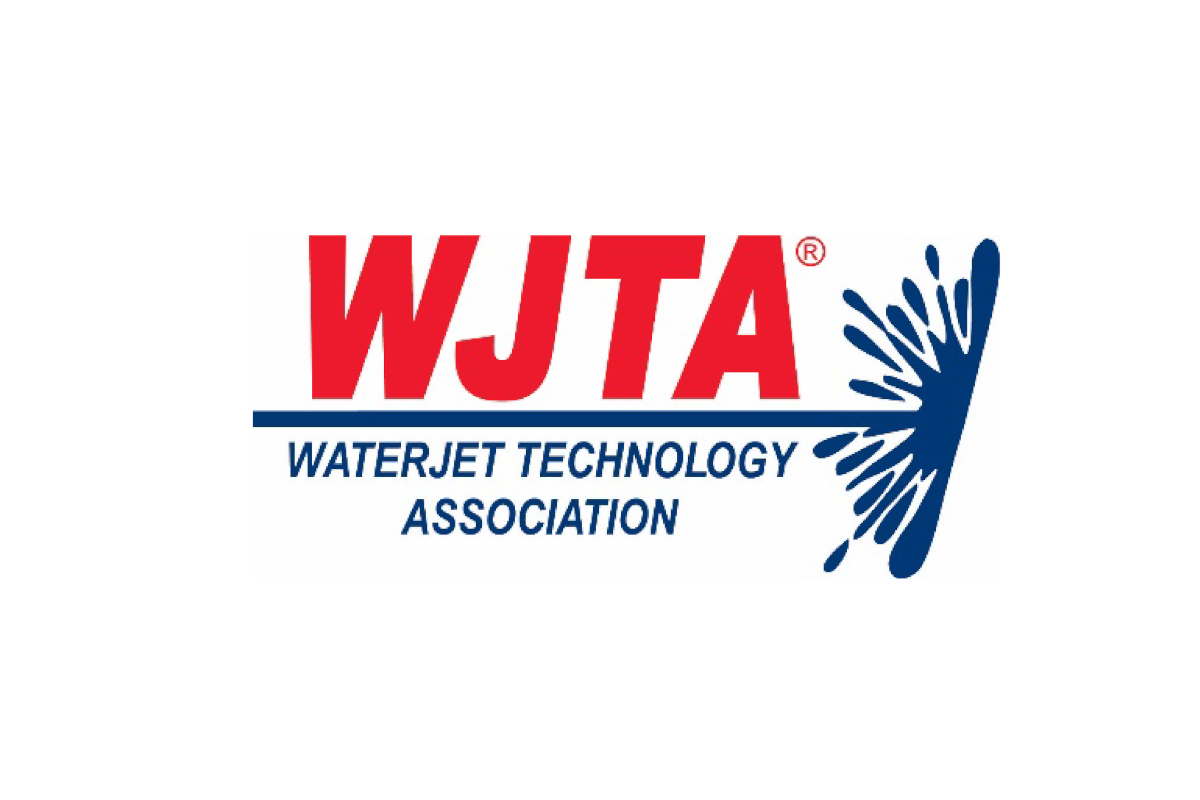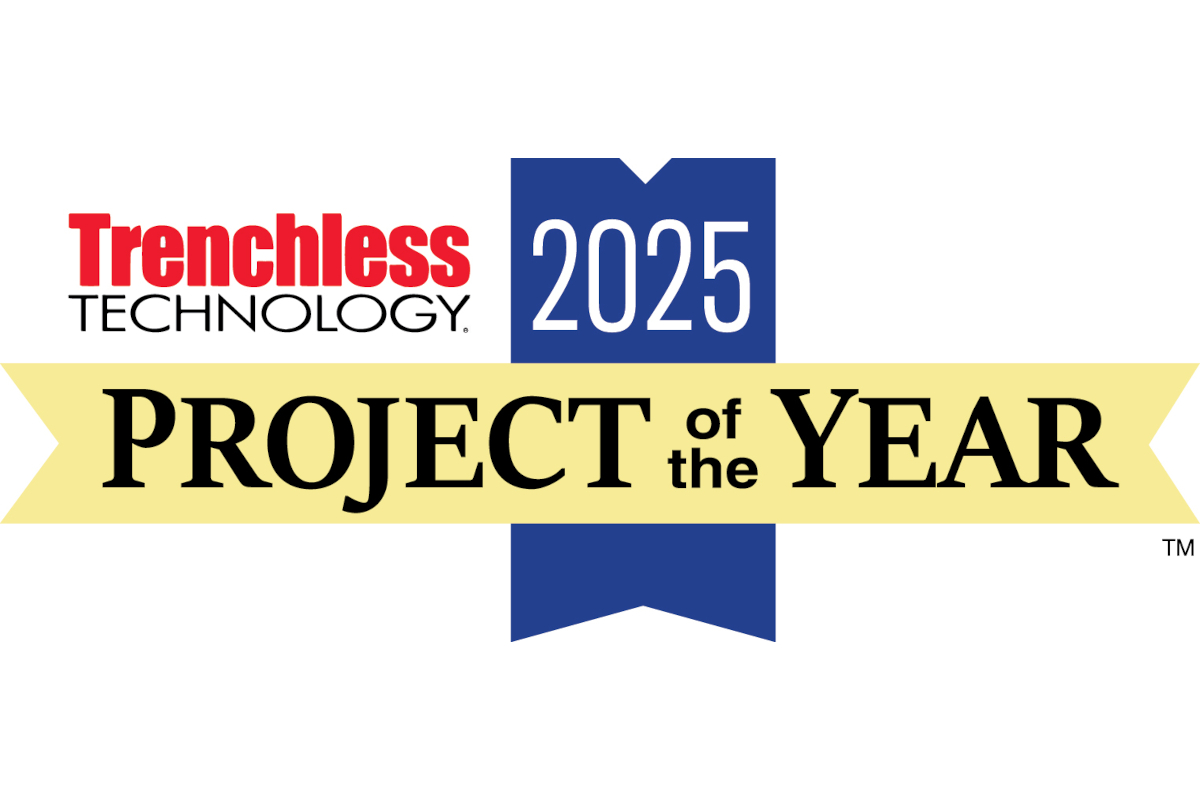
NASTT’s GLSLA and Northwest Chapters Celebrating 30 Years
Trenchless Champions Drive Industry Education, Outreach
Education is the key to the continued growth of the trenchless industry. In Canada, the North American Society for Trenchless Technology has three chapters dedicated to this mission.
Two of those chapters – the Northwest Chapter (NW) and the Great Lakes, St. Lawrence & Atlantic Chapter (GLSLA) – are celebrating 30th anniversary milestones in 2025.
In its early years, the Northwest Chapter included Alberta, British Columbia and Washington State. British Columbia left the fold in 2005 to form the British Columbia chapter. Washington State left in 2009 to be part of the Pacific Northwest chapter. NASTT-NW members voted on a revision of the geographic makeup, one that remains in place today. As a result, the chapter represents Alberta, Manitoba and Saskatchewan.
In the East, the chapter was first focused on the Great Lakes and St. Lawrence regions. The addition of the Atlantic provinces came in 2007.
Since their inception in 1995, both chapters have focused on two major goals in line with the overall work of NASTT across North America.
To advance the science and practice of trenchless technology for the public benefit.
To promote and conduct education, training, study and research in science and practice for the public benefit. In addition, they make information available to all interested and concerned parties.
From the Beginning
The story of these chapters is one of grassroots collaboration, technical innovation and a commitment to education.
In the Northwest, Rick Prentice, a NASTT board member, initiated conversations with Ken Chua from the City of Edmonton. Together, they gathered a group of like-minded professionals. The group included Ken Foster and Reg Belyea from Insituform, Dave Krywiak from Stantec, Chris Skowronski from Associated Engineering, and Bruce Campbell from Neptune Coring.
Their goal was to bring trenchless technology knowledge to Western Canada. By 1996, their efforts expanded to include British Columbia and Washington State, forming the original Northwest Chapter.
Meanwhile, in the East, the GLSLA Chapter was forming with a focus on the Great Lakes and St. Lawrence regions. Some of the early proponents and volunteers in the chapter were Grant Murphy, Scarborough PUC; Bill Garibaldi, City of Waterloo; and Joe Lociacono, CERIU. Also involved early on were familiar names like Piero Salvo, WSA Trenchless Consultants; Mike Willmets, City of Ottawa; and Derek Potvin, Robinson Consultants. In 2007, the chapter expanded to include the Atlantic provinces, reflecting the growing interest across a broader geographic area.
From the beginning, both chapters aligned with NASTT’s mission. These goals have remained constant, even as the chapters evolved and expanded.
The Northwest Chapter’s early years were marked by rapid growth and enthusiastic participation.
“The Chapter grew as more trenchless work was undertaken, and more companies became involved,” says George Bontus, the current NASTT-NW chair. “The first Alberta Trenchless Conference was presented in 1997. The NW Chapter worked to bring more education opportunities to the area. From 2002, an annual conference/symposium was alternated between Edmonton and Calgary. NASTT short courses were offered at the conferences from 2004.”
Experiencing Growth
These events laid the groundwork for what would become No Dig North, a major trenchless technology conference that debuted in 2019. Although the COVID-19 pandemic temporarily slowed momentum, the chapter has since rebounded. It reignited interest and participation across its three-province territory.
Similarly, the GLSLA Chapter has grown to 230 members, representing a diverse cross-section of the industry. This includes municipal owners, engineers, contractors, suppliers, and academics. This diversity has been key to the chapter’s longevity. Some board members have been involved for more than 20 years, helping to shape the chapter’s direction and mentoring the next generation of trenchless professionals.
The growth of both chapters can be attributed to several factors. First, there’s the need. Canada’s aging infrastructure and expanding urban centers demand innovative solutions that minimize disruption and environmental impact. Second, the technology itself has advanced rapidly.
“I attribute this growth to the growing need for trenchless technology applications,” says Marya Jetten, current GLSLA chair. Reasons include aging infrastructure in need of repair or rapid growth in densely populated urban areas. Trenchless technology has proven benefits to reducing community impacts and avoiding major utility conflicts. Similarly, in ecologically sensitive areas, we take a more sustainable approach now than when infrastructure was installed decades ago.
She adds that as trenchless technologies have advanced rapidly, there is need – by members of the industry – to be continually involved. They need to “know what technologies are available, what the current limitations are, and to understand best practices and lessons learned.”
Educating the Industry
A third factor in the growth is the rotating board of directors at both chapters. These volunteers provide fresh perspectives and new ideas. And long-serving members provide continuity and institutional knowledge.
Education has always been the cornerstone of the chapters’ work. For its part, the GLSLA Chapter hosts an annual Trenchless Insights Seminar, focusing on a specific topic each year. In 2023, the theme was cured-in-place pipe (CIPP). In 2024, it shifted to inspection and condition assessment tools. By 2025, the spotlight is on new installations.
These seminars, along with site visits and NASTT Good Practice Courses, provide invaluable hands-on learning opportunities. The chapter also collaborates with other regional organizations to bring trenchless-specific content to broader industry conferences.
The NW Chapter has taken a similar approach. Technical luncheons in Edmonton and Calgary offer regular opportunities for knowledge sharing. Additionally, the revived annual symposiums continue to draw interest.
New Members
Though the chapter doesn’t directly meet with municipalities, its members often serve as informal ambassadors. They share information and advocate for trenchless solutions within their organizations.
Student engagement is another area where both chapters have made significant strides. The GLSLA Chapter has formal student chapters at Queen’s University and Concordia University. It is actively working to expand outreach to other institutions, particularly in Atlantic Canada. In 2024, they launched a Student Scholarship Program to further support young professionals entering the field.
NASTT-NW, meanwhile, has seen a revival of its University of Alberta Student Chapter, originally formed in 1998. In 2024, Red River College formalized its own chapter, and efforts are under way to establish more across the region.
Recruitment and retention of members remain ongoing priorities. Word-of-mouth continues to be a powerful tool, with current members sharing the value they’ve gained. This includes participating in local events, national conferences like No-Dig North, and NASTT’s No-Dig Show. Social media, particularly LinkedIn, has also become an important platform for outreach and engagement.
Evolving with the Industry
Looking back, the original pioneers — those who took a chance on new technologies and built a network of support — laid a strong foundation. Their legacy lives on in the chapters today. It also continues in the students discovering trenchless technology for the first time and in the countless projects across Canada that have benefited from trenchless construction methods.
As the trenchless industry continues to evolve, so will the chapters. However, the core mission remains unchanged: to educate, innovate, and to build a better trenchless community.
In celebrating 30 years, the NASTT Northwest and GLSLA chapters aren’t just marking the milestone. The volunteers are looking ahead at new opportunities to grow the next generation of trenchless champions.
Mike Kezdi is managing editor of Trenchless Technology Canada.

